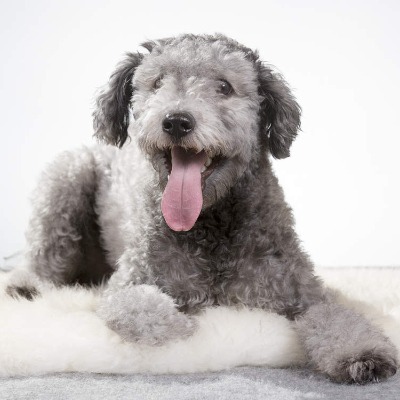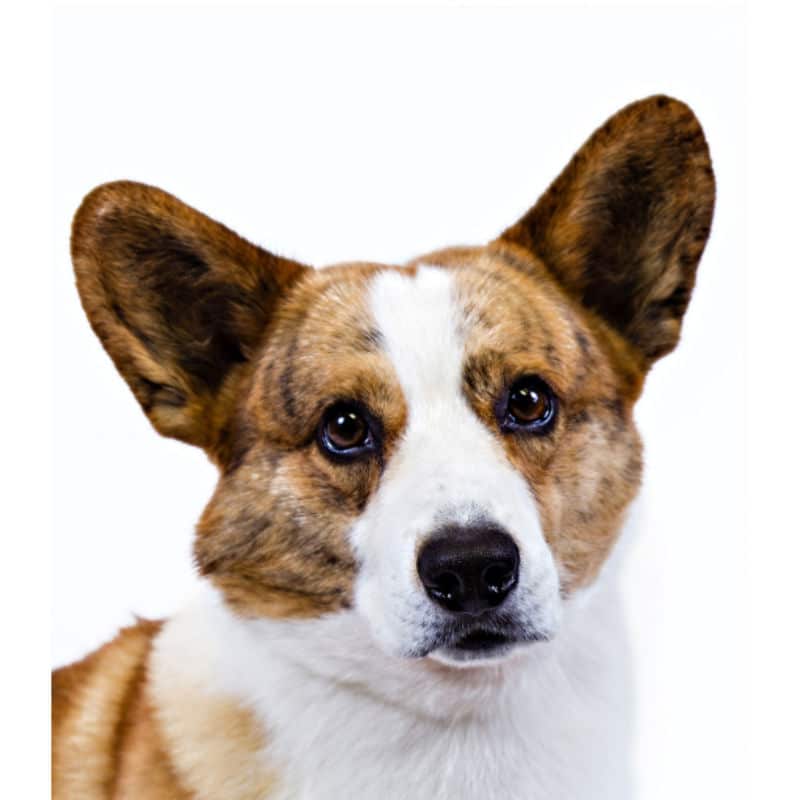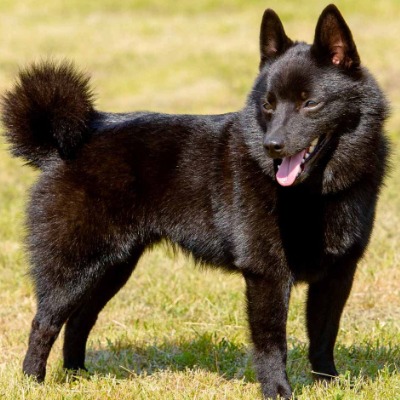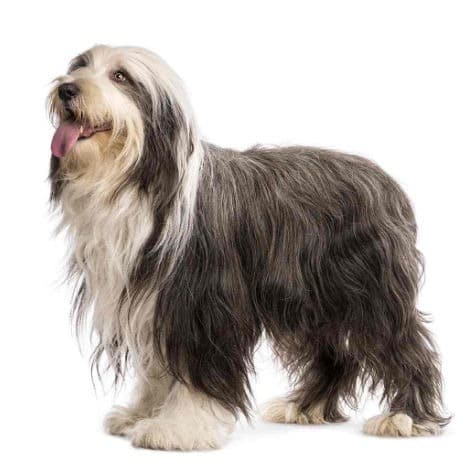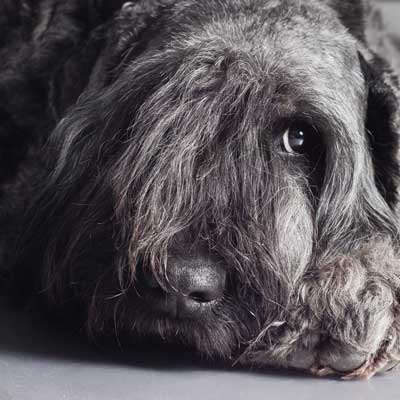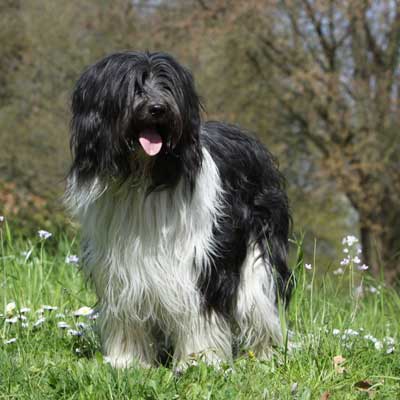Pumi
Piccolo grande cane per la vita in famiglia, instancabile nel gioco<
-
Testa
relativamente lunga e stretta.
La forma della testa è caratterizzata dal muso allungato -
Testa - regione del cranio
Cranio: La sommità del capo è relativamente ampia e bombata. La lunga fronte è sololeggermente bombata e piatta se vista di lato. Le arcate sopraccigliarisono moderatamente sviluppate.
Stop: appena percettibile; la fronte va verso la canna nasale con una linea quasi dirittafra le sopracciglia. -
Testa - regione del muso
Tartufo: stretto, bruscamente interrotto. Sempre nero con tutti i colori del mantello
Muso: la canna nasale è diritta. Il muso si assottiglia verso il tartufo, ma non è mai appuntito.
Labbra: strettamente aderenti ai denti, pigmentate di scuro
Mascelle/Denti: mascelle forti. I denti, ben sviluppati, sono bianchi. Regolare,completa chiusura a forbice, secondo la formula dentaria.
Guance: molto muscolose
Occhi: posizionati moderatamente distanziati, leggermente obliqui. Di media misura,ovali, con taglio dell’occhio marrone scuro.
L’espressione è vivace eintelligente. Le palpebre sono tese, ben aderenti al bulbo oculare e benpigmentate
Orecchi: gli orecchi, eretti, sono inseriti alti, con la terza parte superiore che sipiega in avanti.
Di media misura, regolari, mostrano una forma di V rovesciata. Mostrano pronta reazione a tutti gli stimoli. -
Collo
di media lunghezza, un po’ arcuato, forma un angolo da 50 a 55 gradi sull’orizzontale.
La pelle della gola è tesa, asciutta, senza pieghe. -
Corpo
con muscoli ben sviluppati, asciutto, eccezionalmente teso e resistente.
La razza è particolarmente scarna e d’aspetto armonioso
Linea superiore: diritta
Garrese: pronunciato, lungo, che scende verso il posteriore.
Dorso: corto, diritto e teso.
Reni: corti, ben compatti, diritti
Groppa: corta, leggermente obliqua, di media ampiezza
Torace: il petto è diritto, non ampio, piuttosto profondo. Costole leggermente cerchiate,piuttosto piatte. Lo sterno è profondo, lungo e arriva ai gomiti.
Ventre: fermo, rilevato verso il posteriore -
Coda
la coda, inserita alta, forma un ampio cerchio sopra la groppa.
Il pelo nella zona inferiore della coda è lungo da 7 a 12 cm, ruvido e con peli distanziati, con un po’ di sottopelo.
Non sono permesse code naturalmente corte o code tagliate. -
Arti anteriori
gli anteriori, posizionati sotto il petto, portano il corpo come deipilastri. Sono verticali, paralleli e non troppo distanziati
Spalle: la scapola è lunga e leggermente scoscesa. L’angolo sull’orizzontale è circa di 55 gradi. Il punto della scapola è sistemato verticalmente sopra il punto più profondo dello sterno
Braccio: corto e molto muscoloso. La scapola e il braccio formano un angolo da100 a 110 gradi
Gomiti: strettamente aderenti al torace
Avambraccio: lungo, scarno
Metacarpo: obliquo
Piedi anteriori: piedi rotondi da gatto con dita ben compatte. I cuscinetti sonoelastici. Unghie forti, nere o grigio ardesia -
Arti posteriori
i posteriori sono molto forti. Visti di lato sono piuttosto tesi all’indietro. Visti dal dietro, gli arti sono paralleli, diritti, né troppo ravvicinati né troppo distanziati.
Coscia: muscolosa, lunga, scoscesa verso l’indietro
Ginocchio: allo stesso livello del gomito
Gamba: lunga e asciutta
Garretto: secco con netti profili
Metatarso: corto e scosceso
Piedi posteriori: come i piedi dell’anteriore. Gli speroni non sono desiderati -
Andatura
piuttosto vivace e briosa.
Passo corto, energico, dinamico e armonioso.
Atteggiamento coraggioso e fiero. Il trotto è leggero e armonioso; il cane mette i suoi piedi posteriori esattamente nelle orme dei piedi anteriori -
Mantello - pelo
il pelo ondulato e ricciuto forma ciocche e non è mai liscio o cordato.
Il pelo ha una lunghezza media di 4 – 7 cm, crescendo in ciocche più piccole o più grandi; è elastico, irsuto e folto.
Consiste in un mantello esterno forte ma non ruvido, e un soffice sottopelo.
Il ruvido e rigido pelo protettivo di media lunghezza sugli orecchi cresce verso l’alto. Gli occhi e il muso non hanno lunghi peli.
La preparazione del mantello desiderato viene completata con un “trimming” a mano.
Più piccole correzioni, fatte a forbice sulla testa e gambe, sono possibili. Non è desiderabile una preparazione dell’intero mantello fatta a forbice. -
Mantello - colore
Grigio in varie sfumature (normalmente, il colore alla nascita è nero,che poi col tempo diventa grigio)
Nero
Fulvo. Colori fondamentali: rosso, giallo, crema (una traccia di nero o grigio e una maschera distinta sono desiderabili).
Una macchia bianca sul petto di meno di 3 cm. di diametro e/o una linea bianca sulle dita non sono un difetto.
Bianco Il colore del mantello deve sempre essere intenso e solido. -
Taglia e peso
Altezza al garrese
Maschi 41 – 47 cm ideale: 43-45 cm
Femmine 38 – 44 cm ideale: 40-42 cm
Peso
Maschi 10 –15 kg ideale: 12-13 kg
Femmine 8 – 13 kg ideale: 10-11 kg -
Difetti
qualsiasi deviazione da quanto sopra deve essere considerato comedifetto e la severità con cui questo difetto sarà penalizzato deve essere proporzionata alla sua gravità -
Difetti eliminatori
• Testa rotonda, tipo Puli. Muso più corto del 40% della lunghezza totale della testa.
• Stop fortemente definito
• Mancanza di uno o più denti (incisivi, canini, premolari 2 – 4, molari 1 – 2). Mancanza di più di due PM1. Gli M3 non vengono presi in considerazione
• Enognatismo, prognatismo, mascelle deviate
• Orecchi completamente eretti. Orecchi pendenti dalla base o portati irregolarmente
• Corto pelo liscio. Lungo, molto arruffato, sporgente o scialbo
• Colore cioccolato, mantello multicolore. Macchie tutte uniformi, nettamente definite (ad esempio: focature, o mantello che forma pezzature)
• Taglia che esce dai limiti di altezza dati dallo standard
N.B. I maschi devono avere due testicoli apparentemente normali completamente discesi nello scroto.

